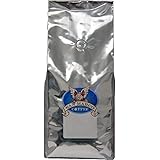Elevating Your Home Espresso: Master the DeLonghi Dedica EC685 for Barista-Quality Coffee
For many coffee enthusiasts, the journey into home espresso often begins with an accessible yet capable machine. The DeLonghi Dedica EC685, typically available for around €150, stands as a prime example, offering a compact footprint and impressive potential for improvement. As demonstrated in the video above, with strategic adjustments and a deeper understanding of espresso mechanics, this machine can yield surprisingly sophisticated results, including an espresso shot of 30 grams extracted in a precise 25 seconds, exhibiting complex fruity and chocolate notes.
This article expands upon the foundational techniques and upgrades showcased, providing an expert-level guide to extracting the utmost quality from your DeLonghi Dedica. The aim is to bridge the gap between entry-level home brewing and the nuanced world of specialty coffee, transforming your daily ritual.
The DeLonghi Dedica EC685: An Accessible Gateway to Espresso Excellence
The DeLonghi Dedica EC685 is widely recognized for its sleek design and user-friendly interface. It features a 1-liter water tank, a portafilter with a pressurized filter basket, and a versatile steam wand that also dispenses hot water. While its small size and affordability make it an attractive option, its semi-automatic nature demands a more engaged approach than fully automatic machines. This necessitates the acquisition of basic barista skills, transforming a simple coffee preparation into a rewarding craft.
The pressurized portafilter, a standard feature, is specifically engineered to forgive inconsistencies in grind size and tamping pressure. This design allows for a “drinkable” espresso even when using pre-ground coffee or a less-than-optimal grinder. However, for those aspiring to elevate their espresso quality, this component is often the first candidate for an upgrade, as it limits the full flavor potential of specialty beans. Understanding these inherent design choices is crucial for any home barista seeking to optimize their brewing process.
Mastering the Fundamentals: From Pre-Ground to Precision Extraction
Initiating your espresso journey with pre-ground coffee offers a convenient starting point, as seen in the initial routine presented in the video. This method bypasses the need for an external grinder, making the process straightforward. However, the true artistry of espresso is unveiled when fresh, whole bean specialty coffee is utilized, paired with precise grinding and dosing techniques.
The Crucial Role of the Grinder in Espresso Production
A high-quality grinder is an indispensable tool for superior espresso, a concept rigorously emphasized in professional barista training. Espresso requires an exceptionally fine and uniform grind, a characteristic often unattainable with blade grinders or many entry-level burr grinders. The particle size distribution directly impacts the extraction kinetics; an inconsistent grind leads to uneven water flow through the coffee bed, resulting in phenomena such as “channeling.”
Channeling occurs when water finds paths of least resistance, bypassing significant portions of the coffee grounds. This leads to under-extraction in some areas (producing sour, thin flavors) and over-extraction in others (resulting in bitter, astringent notes). Conversely, a consistent, fine grind ensures uniform resistance, promoting an even saturation and extraction. For espresso, conical or flat burr grinders are preferred, as they produce the most consistent particle size, which is critical for achieving optimal flavor solubility.
Precision Dosing and Tamping for Consistent Results
Achieving consistency in espresso extraction necessitates meticulous control over two key variables: the coffee dose and the tamping process. As illustrated with the 11.5 grams weighed for an 11-gram brew, precise measurement by weight, rather than volume, is paramount. The density of coffee beans can vary significantly between roasts and origins, meaning a volumetric measure (e.g., a spoon) will not guarantee a consistent mass. A precise dose ensures a repeatable coffee bed thickness and resistance.
Tamping, while seemingly simple, is a critical step in “puck preparation.” The goal is to compress the coffee grounds into a dense, uniform puck, eliminating air pockets and creating an even resistance for the brewing water. A medium, level pressure, as demonstrated, is generally sufficient. Excessive pressure is not required; consistency and levelness are far more important. An uneven tamp can lead to localized channeling, compromising extraction quality. Furthermore, it is imperative that the tamped coffee grounds do not touch the group head when the portafilter is locked into the machine. This contact can disrupt the puck and lead to premature saturation of the dry coffee, negatively impacting the extraction process and potentially causing channeling.
The Art of Extraction: Brewing a Better Espresso Shot
Beyond the preparation of the coffee puck, several factors within the brewing process itself are vital for a quality shot. These include machine temperature management and the precise timing and yield of the extraction.
Pre-heating for Optimal Thermal Stability
Espresso extraction is highly sensitive to temperature fluctuations. A stable brewing temperature, ideally between 90-96°C (195-205°F), is essential for optimal flavor solubility. The DeLonghi Dedica, like many entry-level machines, benefits significantly from pre-heating. Rinsing the portafilter with hot water before dosing serves multiple purposes: it heats the metal components that will contact the coffee, preventing heat loss from the brewing water, and ensures the portafilter is free of any residual coffee oils or particles. This thermal conditioning minimizes temperature drops during extraction, contributing to a more balanced and complete flavor profile.
The 25-Second Rule and Beyond: Optimizing Brew Parameters
The video demonstrates an ideal extraction of 30 grams of espresso beverage from 11 grams of coffee in 25 seconds. This 1:2.7 brew ratio (coffee dose to beverage yield) and extraction time fall within widely accepted industry standards for a balanced espresso. The initial slow flow, gradually accelerating to a steady stream, indicates a well-executed extraction. If the coffee flows too quickly, resulting in an under-extracted (sour, watery) shot, a finer grind is typically required. Conversely, if the flow is too slow, leading to an over-extracted (bitter, astringent) shot, a coarser grind adjustment is indicated.
Dialing in an espresso involves systematic adjustments to the grind size to achieve the desired flow rate and, consequently, the optimal flavor profile. While the 25-30 second range is a robust guideline, the ultimate arbiter of a good shot is its taste. Professional baristas frequently adjust grind settings multiple times throughout the day to account for environmental factors, bean freshness, and desired taste outcomes.
Elevating Milk Texture: Crafting Microfoam for Cappuccinos and Latte Art
A well-made cappuccino is characterized by its velvety microfoam, a texture distinct from dry, airy foam. The creation of this texture is as much a science as it is an art, particularly with a home espresso machine like the DeLonghi Dedica. The video highlights the use of whole fat milk for microfoam, and this preference is rooted in its composition.
The Science of Microfoam and Milk Steaming Techniques
Whole fat milk contains a higher concentration of proteins and fats, which are crucial for creating stable and creamy microfoam. Proteins denature and encapsulate air bubbles, while fats contribute to the silky mouthfeel and help stabilize the foam structure. The steaming process itself involves two primary phases: “stretching” and “texturing.” Stretching (aeration) introduces air into the milk, increasing its volume. This is achieved by placing the steam wand tip just below the surface of the milk, allowing it to draw in air. Texturing (incorporation) involves submerging the wand tip deeper into the milk, creating a rolling motion that integrates the air bubbles into a uniform, glossy texture.
The DeLonghi Dedica’s steam wand, while functional, possesses less power compared to commercial machines. This necessitates a specific workflow: brewing the espresso first, then steaming the milk. This prevents performance degradation that could occur if both operations were attempted simultaneously. Purging the steam wand before and after use is also a critical practice. A quick release of steam before steaming clears any condensed water, ensuring only dry steam enters the milk. This prevents dilution and maintains the integrity of the microfoam.
Strategic Upgrades for Peak Performance
While the DeLonghi Dedica EC685 is a capable machine out of the box, several strategic upgrades can significantly enhance its performance, transforming it into a more formidable brewing tool for specialty coffee.
The Impact of a Non-Pressurized Portafilter
The most impactful upgrade for espresso quality is the transition to a non-pressurized portafilter. Unlike its pressurized counterpart, this type of portafilter requires a much finer, more consistent grind and precise puck preparation. The 16.5-gram dose mentioned in the video for the upgraded portafilter is reflective of the larger basket size often associated with these professional-style components, allowing for a higher coffee-to-water ratio and thus a more intense and complex extraction.
A non-pressurized portafilter, especially a “naked” or “bottomless” version, reveals the true quality of your puck preparation and grind consistency by making channeling immediately visible. This immediate feedback loop is invaluable for learning and refining barista skills. The absence of artificial pressure allows for a true representation of the coffee’s flavor potential, yielding a richer, more nuanced, and sweeter espresso profile, as confirmed by the tasting notes in the video.
Tamper and Steam Wand Modifications
Further improvements can be realized through specific accessory upgrades and modifications. A higher-quality tamper, often with a 51mm diameter for the Dedica, ensures consistent and level compression of the coffee puck. The stock tamper supplied with many machines can be flimsy or less ergonomic, making consistent tamping challenging.
For milk steaming, two primary modifications are suggested:
- Rancilio Silvia Steam Wand: This modification involves replacing the stock steam wand with one from a Rancilio Silvia, a popular prosumer machine. This upgrade, costing approximately €30 and requiring some technical skill for installation, significantly boosts steam power and control. The multi-hole tip of the Rancilio wand allows for more efficient and effective aeration and texturing, facilitating the creation of denser, more luscious microfoam.
- Stock Steam Wand Modification: A zero-cost alternative is to remove the outer metal sleeve from the DeLonghi’s stock steam wand, utilizing only the inner plastic component. While this requires more practice to master, it offers enhanced control over the steam delivery. The single, exposed nozzle allows for a more direct and precise interaction with the milk, enabling a finer microfoam texture that is conducive to latte art. Patience and deliberate technique are critical for success with this method.
The Pursuit of Perfection: Limitations and Future Potential
Despite these significant upgrades and refined techniques, it is important to acknowledge the inherent limitations of the DeLonghi Dedica EC685. Its lower power and temperature stability, when compared to high-end commercial machines, mean it may struggle to perfectly extract very light-roasted specialty coffees, which often demand higher temperatures and more stable pressure profiles. However, for medium to dark roasts, and with the improvements discussed, its performance can be truly exceptional.
The journey with a DeLonghi Dedica is one of continuous learning and refinement. By investing in a quality grinder, upgrading the portafilter and tamper, and mastering steaming techniques—even with modifications to the stock steam wand—the capabilities of this affordable machine are dramatically expanded. With these strategic enhancements and dedicated practice, the DeLonghi Dedica EC685 can indeed produce espresso and milk beverages that far exceed its initial price point, proving that exceptional home espresso is within reach.







